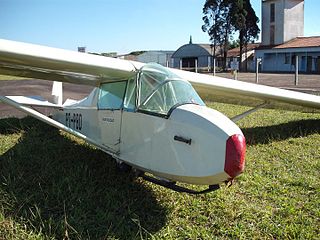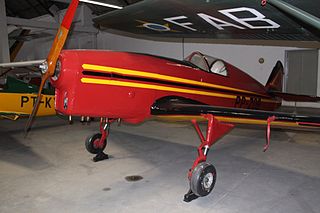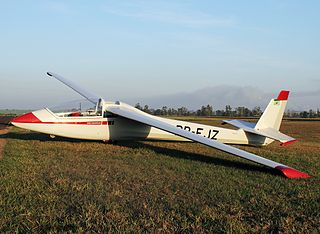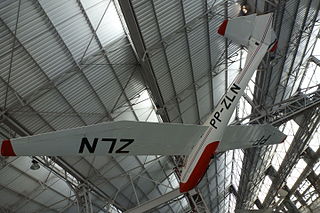
The Neiva B Monitor, also designated B-2, is a Brazilian tandem two-seat glider aircraft designed and manufactured by Indústria Aeronáutica Neiva between 1945 and 1955 for primary training and general flying.

The IPT-16 Surubim was a Brazilian single-seat, single engined experimental light aircraft. A single example was built and flown in 1959.
The IPE KW-2 Biguá is a sailplane that was produced in Brazil in the 1974.

The IPE 02 Nhapecan is a sailplane that was produced in Brazil in the 1970s and 1980s. It is a conventional, two seat design of wooden construction.

The Embraer EMB 400 Urupema initially called IPD 6505 Urupema, is a Brazilian glider developed at Instituto Tecnológico de Aeronáutica, São José dos Campos, in 1964, and later produced by Embraer.
The Niess 1-80, also known as Galeão 5 FG, was a military and civilian trainer aircraft built in Brazil during the 1950s. It was originally developed by Marc Niess as an prototype based on the CAP-4 Paulistinha, which he worked while employed at Companhia Aeronáutica Paulista.
The Niess 2-100, was a civilian two-seat high-wing sport aircraft built in Brazil during 1952.
The IPE 06 Curucaca is a light aircraft built by the Brazilian manufacturer IPE Aeronaves.
The IPT-0 Bichinho was a Brazilian single-seat, single engined experimental sports aircraft.
The SP-18 Onça also known as the IPAI-27 Jipe Voador, was a Brazilian single-seat, single engined experimental agricultural aircraft.
The IPAI-26 Tuca was a Brazilian single engined high-wing light utility aircraft.

The Schubert P-1 is a sailplane produced in Brazil, designed by the aeronautical engineer Ekkehard Schubert.

The IPT-2 Aratinga, was a Brazilian monoplane, single-seat glider designed and manufactured by the IPT engineers.
The IPT-5 Jaraguá, was a Brazilian sailplane aircraft designed with two seats in a tandem-seat configuration for general flying.

The IPT-7 Junior was a light aircraft manufactured by the Brazilian Instituto de Pesquisas Tecnologicas (IPT).
The HW-4 Flamingo, was a Brazilian two-seat in tandem-seat configuration, sailplane aircraft designed and manufactured for general flying.
The IPT-6 Stratus, was a high-performance two-seat, high-wing sailplane.
The IPD Urubu also known as the IPD/PAR PE 80367, was a two-seat sailplane of high-wing.

The IPD Periquito, was a single-seat sailplane of high-wing construction designed in 1956 by Guido Pessotti in Brazil.
The Rio Claro Araponga, was a single-seat sailplane of high-wing.








